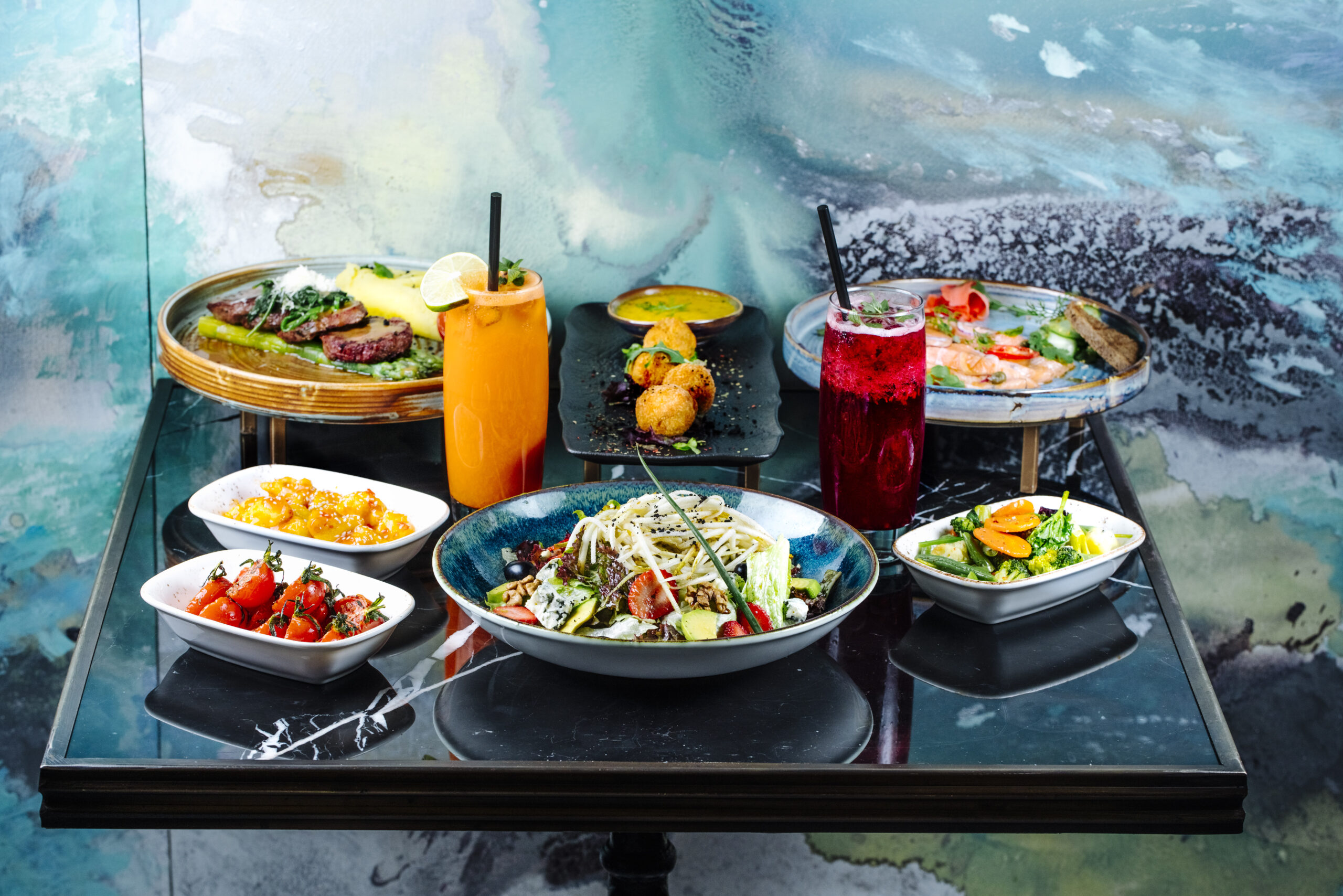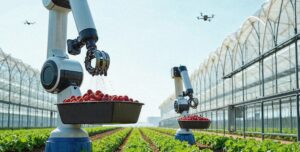Southeast Asia’s food and beverage industry is experiencing a dynamic transformation, driven by the rising demand for healthier, functional, and sustainable food choices. Rapidly evolving consumer preferences, a heightened focus on health and wellness, and increasing awareness of food’s environmental impact are reshaping the region’s culinary landscape. This article delves into the key trends fueling this shift and provides insights on how businesses can adapt to stay competitive in this fast-growing market.
The Growth of Southeast Asia’s Food and Beverage Industry
The region’s food and beverage industry is experiencing steady growth, with an annual expansion rate of 6.99%. Valued at $667 billion in 2023, the industry is projected to reach $900 billion by 2028. This impressive growth is primarily driven by the so-called “VIP” markets – Vietnam, Indonesia, and the Philippines, followed by the mid-growth countries of Malaysia and Thailand. As the market expands, the demand for healthier, functional, and more sustainable food products will play a critical role in shaping the industry’s future.
Drivers of Growth: Health, Wellness, and Lifestyle Awareness
The primary driver behind this growth is the growing demand for food and beverages that support healthier lifestyles. The health and wellness market in Southeast Asia is projected to grow at an annual rate of 9.23% between 2024 and 2032. This trend is fueled by a combination of factors, including increased disposable incomes, heightened awareness of lifestyle diseases, and the wide availability of weight loss medications, fitness and diet apps, and social media content promoting healthy living.
Consumers are increasingly seeking products that align with their desire to live healthier lives. This shift is also influenced by a rise in consumer education on nutrition, health risks, and the availability of options that promote long-term well-being. The food and beverage industry must adapt to this growing awareness by offering products that cater to these changing demands.
The Growing Demand for Functional Foods and Beverages
One of the most significant shifts in consumer behavior is the increasing desire for functional foods and beverages. Consumers today are looking for more than just nourishment from food – they want products that offer additional health benefits. In 2023, the functional food market in Asia Pacific (APAC) was valued at $127.46 billion and is expected to grow at an annual rate of 7.66% through 2028.
This trend is largely driven by an increase in single-person households, busy dual-income families, and an aging population seeking foods that enhance overall mental health and well-being; improve sleep quality; boost gut health and maintain bone health. Additionally, the aging population is particularly focused on products that help them age gracefully, stay physically and mentally active, agile and productive well into their golden years.
Women, with more disposable incomes, are also becoming a key consumer segment. They are actively seeking functional food products that help them manage menopause, balance hormones, and optimize their health at different life stages.
The Plant-Based Disruption
The plant-based food and beverage trend is also gaining momentum, driven by consumer concerns about climate change and food security. The market in Southeast Asia is projected to reach $1.7 billion this year. However, this number may not be reached, as many flexitarians, that is, those who alternate between plant-based and animal products, have switched back to consuming animal products, which they perceive as healthier and more nourishing sources of protein.
Having said that, the presence of a wide variety of plant-based food and beverages in supermarkets today, suggests that the demand for plant-based options remains strong. To meet this demand, the food and beverage industry needs to rethink its approach to plant-based products. One solution is to focus on natural ingredients like beans, peas, lentils, mushrooms, whole grains, or fermentation-based proteins, with clean labels. Additionally, the exploration of cell-based meat, which is a more sustainable option, could offer exciting opportunities for the industry.
Challenges Facing the Food and Beverage Industry
While the market for healthier, functional, and sustainable products is growing, there are several challenges that the industry must address. Two of the most prominent challenges are cost and taste.
- Cost of Healthier Products
The cost of raw materials, ingredients, and logistics has risen significantly in recent years. Additionally, the cost of living across Southeast Asia has increased. Countries like Indonesia and Vietnam have seen substantial increases in the cost-of-living index. As a result, consumers are becoming more selective and expect greater value for the price they pay. Together, these issues have made it very difficult for the industry to price healthier food and beverages competitively.
- Taste vs. Health
Healthier food options, i.e. those with reduced fat, sugar, and sodium, often do not taste as good as their traditional counterparts. Although the industry has made strides in optimizing taste using sweeteners, seasonings, and other ingredients, achieving taste parity remains a challenge. Consumers are unwilling to compromise on taste, and food brands must balance taste and health benefits.To complicate matters further, the ingredients needed to optimize taste add more cost to the product and more ingredients, which runs counter to the consumer demand for clean label products.
Overcoming Challenges Through Innovation and Technology
To overcome these challenges, the food and beverage industry must embrace innovation and technology.
- Cost Management
Healthier, functional food products cost more to produce, as each value added component – nutrient, functional ingredient, ingredient needed to optimize taste, contributes cost to the product. Businesses can offset this cost by pricing up. To offset this, businesses can adopt a premium pricing strategy. Positioning the product at the upper range of affordability for middle-class consumers is viable, given Southeast Asia’s sizable market. For example, in Indonesia, 20% of the population (approximately 47.8 million people) falls into this segment, while in Vietnam, it is 10% (around 13 million people). As economies of scale improve and sales grow, pricing can be adjusted to reach a broader audience.
- Taste Optimization
Achieving perfect taste parity between healthier and traditional products is challenging, but transparency and consumer engagement can bridge the gap. Brands can use taste tests to highlight nutritional benefits and functional ingredients, allowing consumers to make informed decisions about taste trade-offs versus health advantages. Effective marketing that sets realistic taste expectations can further drive consumer acceptance.
- Regulatory Challenges
Southeast Asia’s diverse regulatory landscape presents another challenge for food brands. Each country has its own set of regulations, making it difficult for products to easily cross borders. To streamline expansion, brands should identify target markets early and incorporate regulatory criteria into product design from the outset. By ensuring compliance across multiple markets, businesses can avoid costly reformulations and facilitate smoother cross-border trade.
- High Failure Rate
Although exact figures are unavailable, a significant percentage of healthier food and beverage products are withdrawn within one to two years of launch, leading to financial losses. To mitigate this risk, the industry has adopted stage-gate protocols, implementing strict checklists at each phase of innovation. While this has slightly improved success rates, AI-powered tools are now being integrated into the process to better predict consumer needs, optimize product design, and refine marketing strategies. With full AI adoption, error rates and product failures are expected to decline significantly.
The Role of AI in Food Innovation
Artificial intelligence (AI) is becoming increasingly important in the food and beverage industry. AI-powered tools are being used to review consumer online conversations and survey results, to identify what consumer really need. AI is also being used to optimize product design, review and refine marketing strategies, and identify precise consumer segments for personalized nutrition solutions.
However, the adoption of AI in Southeast Asia has been slower compared to other regions. The food industry in Southeast Asia has been resistant to change, and the necessary data to support AI tools is still being developed. To fully capitalize on the potential of AI, food brands and ingredient suppliers need to invest in building and maintaining data-driven systems.
Summary: A Future Focused on Health, Innovation, and Technology
The future of the food and beverage industry in Southeast Asia is full of opportunity, but only for those who are willing to innovate and adapt to the evolving market. The key to success lies in developing healthier, cost-efficient products that offer tangible benefits to consumers. Food brands must also embrace pricing strategies that reflect the true cost of healthier ingredients while ensuring long-term profitability.
Technology, especially AI, will play a pivotal role in shaping the future of the industry. By adopting AI-powered tools and working collaboratively to update and maintain data systems, the industry can optimize its innovation processes and meet the ever-changing needs of health-conscious consumers.
To stay ahead in the competitive landscape, food brands must prioritize health, right pricing for sustainability, and innovation, making sure to respond to the increasing demand for healthier, functional, nutrient-dense, and sustainable food products. Only by doing so, will businesses thrive in Southeast Asia’s rapidly growing food and beverage market.
About the Author
Yashna Harjani is co-head at cmXp2, where she co-leads the firm’s counsel in the food, nutraceutical, and supplement sectors. Bio.
About cmXp2
cmXp2 (“Xp2”) is a strategy advisory firm dedicated to supporting organizations in high-regulated sectors, specifically: Food & Nutrition, Agriculture & Agri-Food / Aquaculture, Life Sciences, and Global Banking & Markets, Institutional & Corporate Banking.
Xp2’s partners’ deep sector leadership expertise is well-positioned to help clients navigate the complex and evolving landscape of regulatory, legal, and ethical frameworks. We shape opinions, deliver impactful results and demonstrate meaningful value propositions. Our services extend beyond regulatory guidance, focusing on marketing compliance, stakeholder advocacy & engagement, and sustainability branding & reputation to drive impact in today’s competitive markets.
Xp2 is a division of the award-winning Corporate Media Services Pte Ltd (CorpMedia) that has over 32 years of experience. The firm is headquartered in Singapore and
serves the Southeast Asia region.








